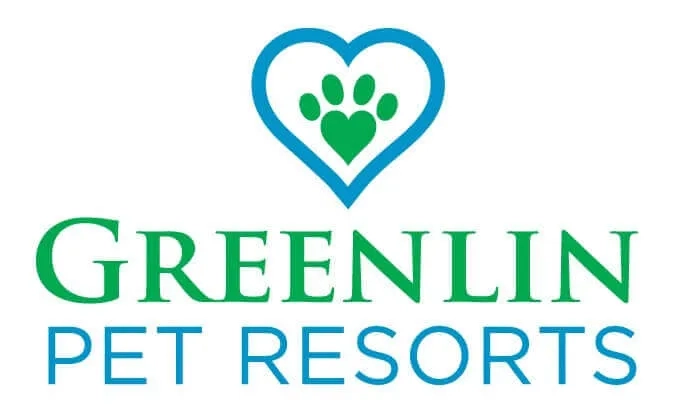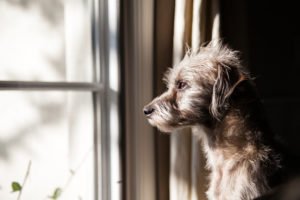Returning to the Office? Here’s How You Can Help Your Dog Cope
If there’s one demographic whose lives actually improved during the COVID-19 pandemic, it’s got to be our pets. For the first time, they had us all to themselves, all day! And while many businesses, restaurants, and recreational venues gradually opened up over the fall and winter of 2020, a good portion of us were still working from home.
Now, that lifestyle is set to be disrupted. With vaccinations rising and case numbers falling, many of our employers are asking (or demanding) that we return to the office. This means that the era of 24/7 bonding time for our pets has ended.
The transition for your pet will be jarring, no matter what type of personality they have. For those of us who adopted a new dog during the pandemic, it will mean a completely new way of life.
Dealing with the separation anxiety that follows our return to the office may mean a struggle for both pets and their owners. Thankfully, though, there are some ways to make the transition easier while strengthening your pet’s self-confidence overall.
Consider Every Outing a Practice Round
Workday routines can be rough for both you and your pet. Depending on the length of your commute, you could be gone for a stint that lasts anywhere from 8 to 10 hours. If these long absences represent the first time in a year (or ever) that your pet has had to endure that much time apart, it will be that much more brutal for them to handle.
The good news is that offices aren’t the only things that have opened up. Everything from cafes to movie theaters, retail, and amusement parks has reopened. That means you get a chance to enjoy yourself or run important errands, while your pet gets used to the idea of you not being home.
Treat every outing as practice for managing your dog’s separation anxiety. Provide them with a comfortable, safe environment where they have access to all the essentials. Keep them indoors during the peak of the summer heat, and keep hazardous foods and other things they can get out of reach. Provide them with toys as an activity, preferably something that taps into the reward center of their brain.
Most importantly, get your dog used to the idea that you won’t disappear for 8 hours or more every time you pick up your keys. Try going on short trips in the evening and on weekends. Mix up your routine for leaving by sometimes going through it and then staying. Take your dog on some trips, when possible — but don’t leave them in the car!
Getting your pet used to you leaving on occasion teaches them that outings are no big deal. You can also learn to recognize the specific problem areas they may encounter when they feel separation anxiety, which helps you prepare for longer stints away from home.
Get Out Some of Your Dog’s Energy in the Morning
One of the best solutions for your dog — and perhaps the hardest thing for you to hear — is to get up early for pre-commute walks. These jaunts around the neighborhood not only help your dog work out some of their nervous energy but also include your pet in your routine. They may begin to associate your alarm with a much-appreciated walk rather than a signal that you’re soon going to be leaving.
Balance Bonding Time With Alone Time
A walk after you return home from work is a must, especially if your pet was unable to go outside all day. You should also give your pet plenty of love, attention, and stimulation while you two have the chance to be together. If you come home from work and simply ignore them, that can make them even more fearful when you leave since it signals that you won’t have much energy for them the rest of the day.
At the same time, don’t feel as if you have to make up for the lost time by bombarding your pet with activities and attention. Once they’ve had their walk, give them some time to be on their own. This can mean brief time spent outside in a fenced-in yard, or it can mean they get time alone with their toys. Your pet might even prefer to take a rest on the floor while the rest of the family goes about their activities.
As the American Kennel Club recommends: “If your dog is constantly by your side, begin restoring a sense of independence. Encourage them to spend more time in their own bed, outside in a fenced yard by themselves, or in their crate while you perform a task that draws your attention away from them. When your dog settles down and relaxes, wait a couple of minutes and then praise them and give them a treat.”
Overall, the goal is for your pet to feel a connection with you but not a constant dependency. It can learn to appreciate alone time as well as time spent with everyone else, helping it reduce its anxiety over you leaving for work.
Make Coming and Going Feel Like No Big Deal
We love our pets, and we may feel guilty every time we leave them. Even still, it does them a disservice to make our anxieties obvious, since your dog can pick up on them. It’s contagious!
The most obvious moments to focus on are when you leave the home and when you come back. Avoid talking too much to your pet or lavishing too much attention upon them at these times. If you tend to feed your pet or engage in a certain routine, try to space these moments out from the time you actually leave or come back. Otherwise, you signal to the pet that these are very important moments in the day — things they could stress out over.
Speaking with NPR, Dr. Douglass Kratt, president of the American Veterinary Medical Association, notes that “they get very hyper and very excited — the people do as well as the pet. And then they close the door and they take off and then they make a big event when they come home too. Try to keep it as low-key as possible, hopefully trying to keep yourself breathing and calm because then our pets will definitely feed off of that as well.”
Instead of making a big production, aim for calm. Don’t give in and lavish attention if, when leaving, your pet exhibits signs of anxiety. Also, don’t make a big production out of returning. Wait for your pet to calm down, and then begin addressing it, feeding it, or moving on with your evening routine together.
Give Your Pet Some Daytime Fun and Friends at Dog Daycare
Without a doubt, one of the best ways to avoid having your pet suffer from boredom and loneliness while you are at work is to bring them to dog daycare at Greenlin Pet Resorts.
Greenlin provides safe activities and playgroups arranged by size, age, and temperament. With state-of-the-art air conditioning and an air purification system in our indoor pet gym, there’s even lots of fun to be had on the hottest of days! And since we provide special care for senior dogs and also offer puppy daycare, dogs of all ages can come to play.
Make us a part of your weekly routine, or give your dog a special break from being home alone from time to time. Our highly trained and experienced staff are ready to welcome them with open arms!
Find out more about Greenlin dog boarding, dog training, and other services, or book your next appointment when you call a dog daycare location near you!

